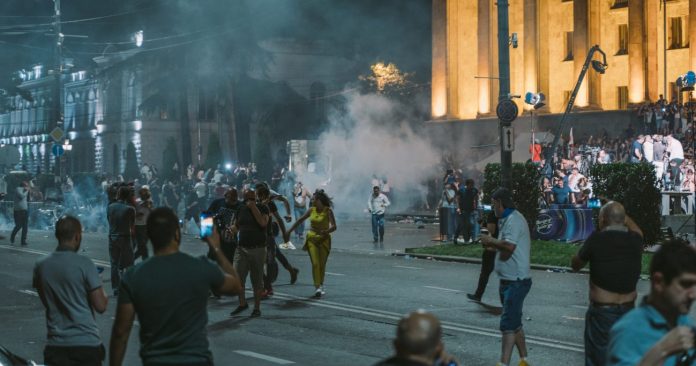Події в Грузії, що відбуваються після рішення уряду відкласти європейську інтеграцію до 2029 року, стали одними з наймасштабніших протестів останніх років. Громадяни активно висловлюють своє невдоволення, вимагаючи повернення до проєвропейського курсу.
Основні деталі: Протести почалися після сумнівних результатів виборів 26 жовтня та урядового рішення перенести вступ до ЄС. Зіткнення з поліцією: У Тбілісі, Батумі та інших містах протестувальники використовують феєрверки, лазерні указки, а в деяких випадках і “коктейлі Молотова”. Поліція відповідає водометами, сльозогінним газом та гумовими кулями. Підпал машини поліції: Згідно з відео телеканалу Imedi, протестувальники могли підпалити кабіну поліцейської машини запалювальною сумішшю.
Президентка Саломе Зурабішвілі: Виступила на підтримку мирного протесту, наголосивши, що він має залишатися спонтанним та без участі політиків. Вона закликала до правової допомоги затриманим. “Кавказький легіон”: Бійці, які воюють проти РФ на боці України, заявили про готовність повернутися до Грузії для захисту населення. Однак Зурабішвілі заперечила такі плани, назвавши їх провокацією. Країни Балтії: Лідери Литви, Латвії та Естонії оголосили про плани запровадити санкції проти грузинських політиків, відповідальних за насильство щодо протестувальників. Позиція ЄС: У Брюсселі ситуація поки не отримала офіційного коментаря, але відомо, що затягування процесу євроінтеграції Грузії сприймається критично. Силовий розгін: Протести 29 листопада і наступні дні супроводжувалися силовими діями поліції, що призвело до двохсот затримань. Побудова барикад: Люди зводять барикади в центрі Тбілісі та інших містах, намагаючись протистояти силовикам.
Події в Грузії показують серйозне невдоволення громадян урядовим курсом. Це може мати далекосяжні наслідки для політичної стабільності країни та її міжнародної репутації.


